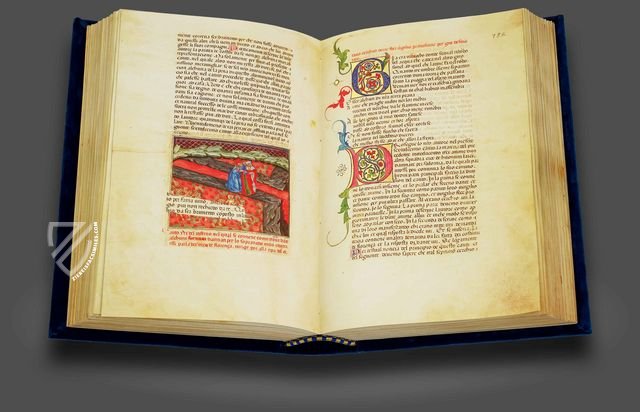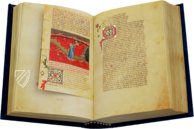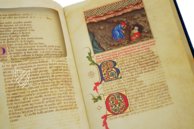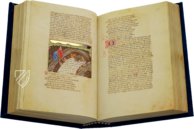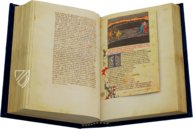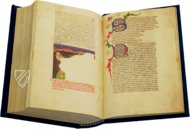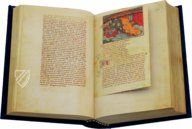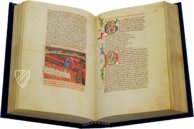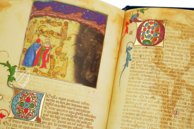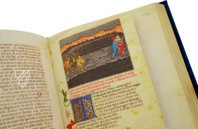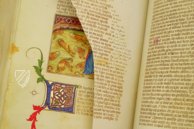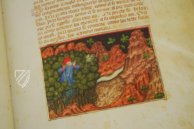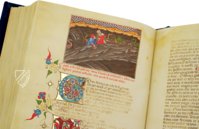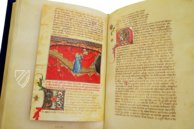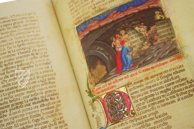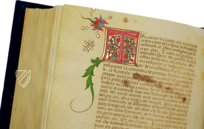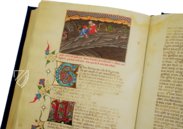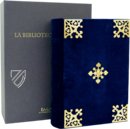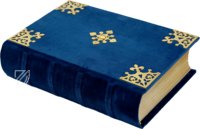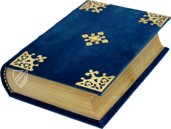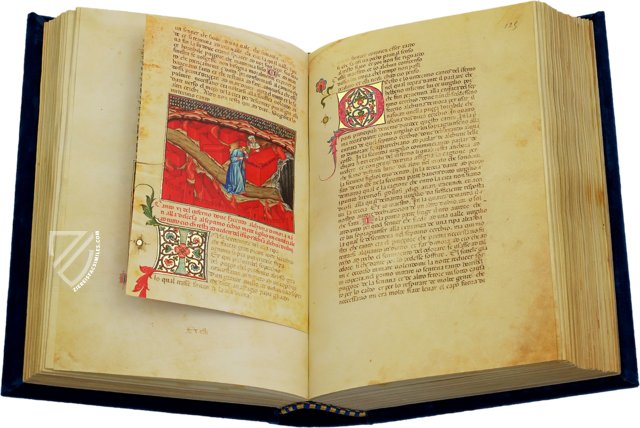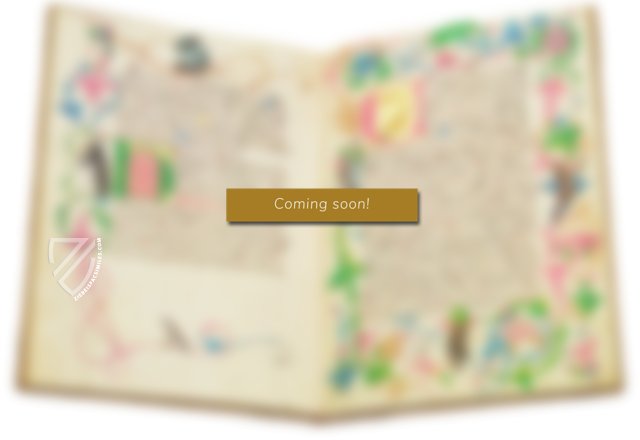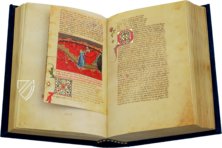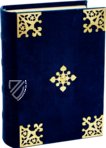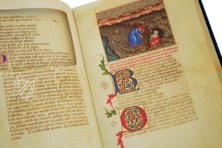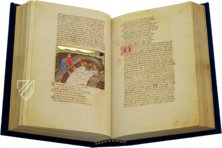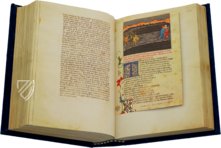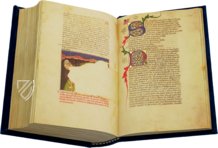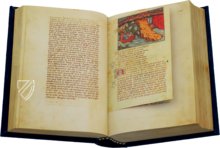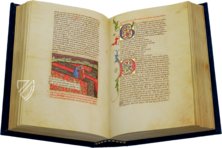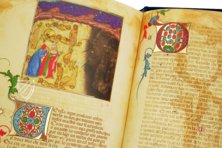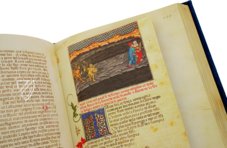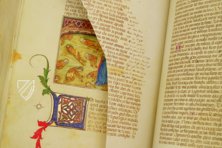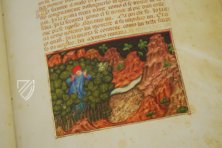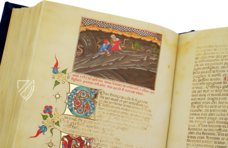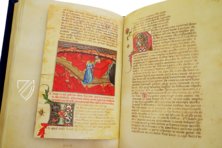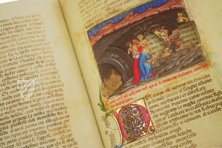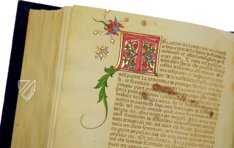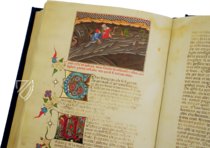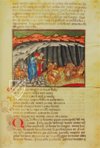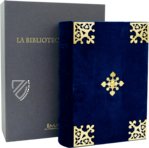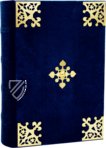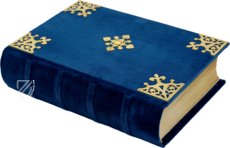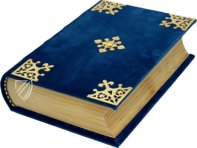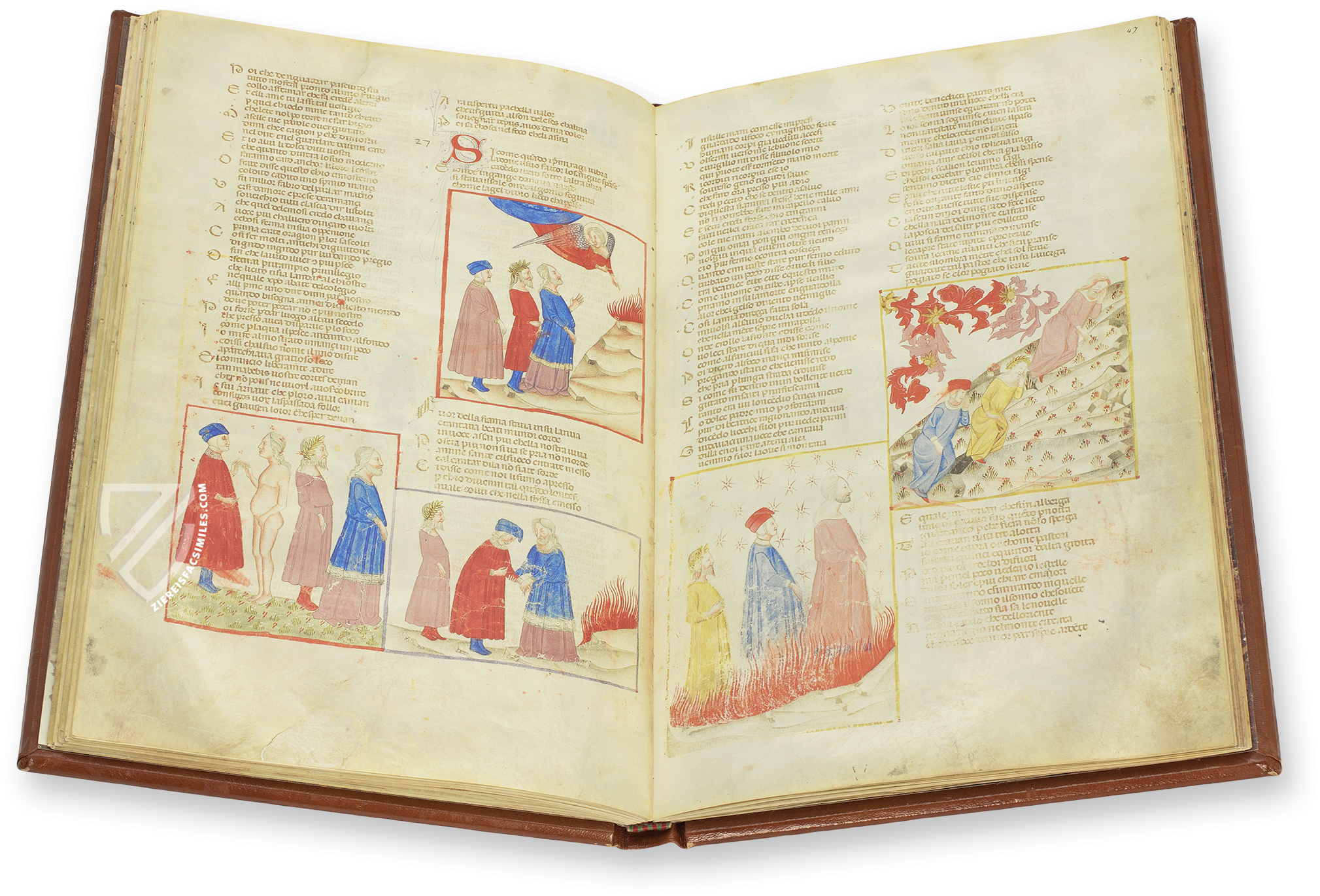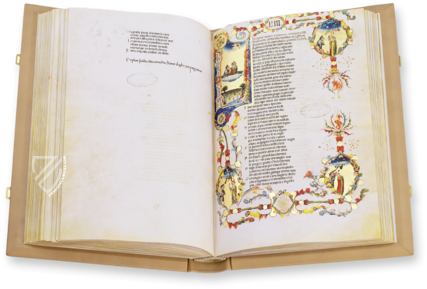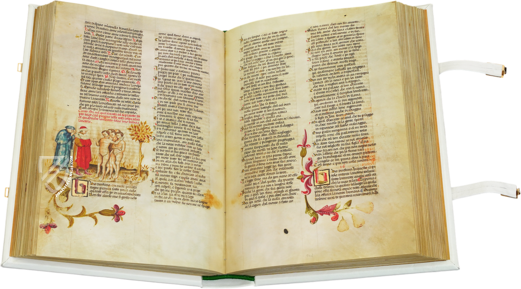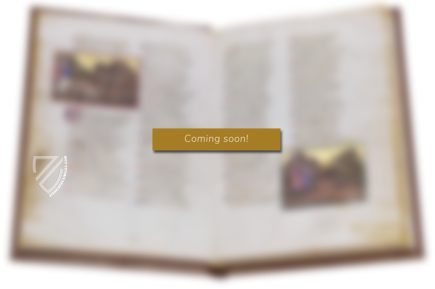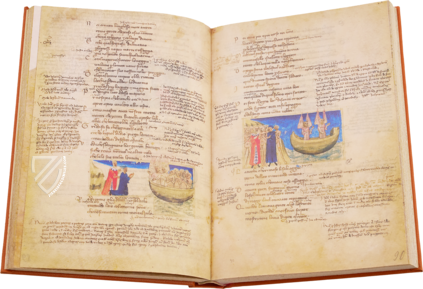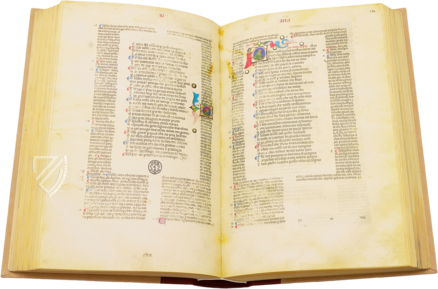Dante Alighieri - Divine Comedy Paris-Imola
The Divine Comedy by Dante Alighieri (ca. 1265–1321) is a historic and groundbreaking work of literature, which was not only fundamental for the formation of the modern Italian language but is also considered to be the most important literary work of the Middle Ages. Originally created for the Duke of Milan, Filippo Maria Visconti (1392–1447), this manuscript is one of the most lavish copies of the Inferno and is currently divided into two codices: ms. Italien 2017 of the Bibliothéque Nationale de France containing 59 miniatures on 381 pages and ms. 76 of the Imola Municipal Library consisting of 21 sheets with 13 miniatures. The coveted manuscript has had an interesting history, passing through various hands including King Louis XII of France (1462–1515) before being eventually divided between the two libraries, but has been reunited here in a spectacular facsimile edition.
Dante Alighieri - Divine Comedy Paris-Imola
Dante Alighieri (ca. 1265–1321) is remembered as one of the fathers of the Italian language and influenced other great medieval authors like Boccaccio and Chaucer. Guided by the Roman poet Virgil (70–19 BC), the author and protagonist of the Divine Comedy passes through Hell, Purgatory, and Paradise on a spiritual and philosophical journey that has had a lasting impact not only on Italian literature but on wider European society. Although the original manuscript is not believed to have survived, numerous manuscripts were made shortly after his death and in the centuries that followed including the specimen at hand, which is one of the finest copies of the Commedia in existence: the Divine Comedy Parigi-Imola.
A Fine Specimen of the Lombard Quattrocento
This manuscript is believed to be the work of the so-called “Maestro delle Vitae Imperatorum”, who was active in Northern Italy during the first half of the 15th century. The artist’s pseudonym comes from another masterpiece created by him that is also stored in Paris: Svetonio’s Vitae, a vernacular transcription made by Pietro Candido Decembrio in 1431. Stylistically, the artist was greatly influenced by the International Gothic style and specifically the work of Giovannino de’ Grassi and Michelino da Besozzo, which is characterized by sinuous figures, undulating lines, and chromatic choices ranging from opaque to transparent and making excellent use of diffuse light. Furthermore, it is believed that the Maestro delle Vitae Imperatorum collaborated with Belbello da Pavia on this and other projects. The result is a mixture of naturalism and dreamy, fairytale-like imagery. Only 72 of the original 115+ miniatures that adorned the manuscript survive today, but the manuscript is still extraordinarily adorned in comparison to others. Whereas most Dante manuscripts only have a miniature at the beginning of each cantica, usually embedded in a historiated initial, this manuscript dedicates three or four miniatures to each canto. Furthermore, the text is embellished with colorful gold leaf initials and decorative elements from French illumination like leafy tendrils.
A Divided Masterpiece
The Divine Comedy Parigi-Imola was stored in the famous Visconti-Sforza Library in Pavia until the end of the 15th century, when the Kingdom of France intervened in Italian affairs on the side of Milan and set off the Italian Wars (1494–1559). At this time, the manuscript came into the possession of King Louis XII of France (1462–1515), who is believed to have in turn gifted it to the Duke of Melfi, Giovanni Caracciolo (ca. 1372–1432) as a reward for services rendered to the crown. The work then passed to Caracciolo’s son-in-law, Antoine de Cardaillac, and later to his heirs. In 1835, the manuscript was retrieved from a castle in the Dordogne region of France by the erudite Gaston de Flotte, who purchased it and brought it to Marseilles. Between 1836 and 1837, he collaborated with Giuseppe Zaccheroni, an exile from Imola after the revolts of 1831, to create a critical edition that was published in 1838. After to his return to Italy, Zaccheroni was elected a deputy of the college of Imola in 1865 and in the following year, he donated his annotated Dante manuscript to the Imola Municipal Library. In 1887, de Flotte’s heirs sold the remaining fragment to Bibliothèque nationale de France, where it is still preserved.
Codicology
- Alternative Titles
- Divina Commedia Parigi-Imola
Dante, Inferno, avec le Commentaire de Guiniforte Barzizza
Inferno Parigi-Imola
Dantes Göttliche Komödie Parigi-Imola
Dante, Inferno Parigi-Imola
Dante Alighieri - Göttliche Komödie - Paris-Imola
Divina Commedia del Duca Filippo Maria Visconti - Size / Format
- 381 pages + 21 pages / 32.0 × 21.5 cm
- Origin
- Italy
- Date
- 1430–1450
- Epochs
- Style
- Genre
- Language
- Script
- Gothic Textura
- Illustrations
- 72 colorful miniatures (59 from BNF, Italy 2017, and 13 from Bib. Com. Ms. 76) and dozens of gold-embellished decorated initials
- Content
- Dante's Inferno
- Patron
- Filippo Maria Visconti, Duke of Milan
- Artist / School
- Workshop of the Master of the Vitae Imperatorum
Lombard School - Previous Owners
- Visconti–Sforza Library (Pavia, Italy)
King Louis XII (France)
Giovanni Caracciolo duke of Melfi (Italy)
Gaston de Flotte (France)
Giuseppe Zaccheroni from Imola (Italy)
Dante Alighieri - Divine Comedy Paris-Imola
Seventh Circle (Violence)
In Canto XII, Dante and Virgil are surrounded by shattered stones originating from the great earthquake that shook the earth at the moment of Christ's death as they enter the first ring containing murderers, war-makers, plunderers, and tyrants. It is patrolled by the centaurs, who shoot arrows at any sinners who try to escape from Phlegethon, a river of boiling blood and fire. The centaur Nessus guides the poets along the banks of Phlegethon and points out various kings and conquerors from history.
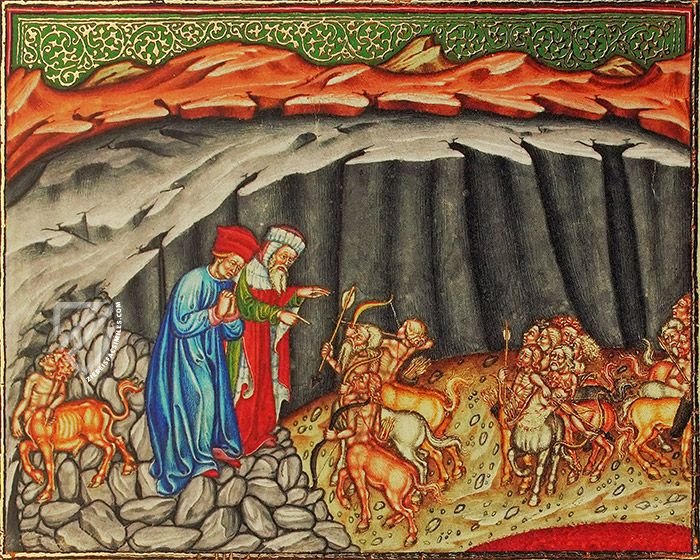
Dante Alighieri - Divine Comedy Parigi-Imola
Second Circle (Lust)
Canto V is introduced by a splendid floral initial with a shimmering gold background and an introduction written in red ink. In the miniature above, Dante wears blue while Virgil is depicted with a forked beard as they enter Hell proper. The writhing mass of human flesh in front of them are sinners who succumbed to lust, but now their bright and voluptuous sin is revealed to be a dark chasm of helpless discomfort.
The figure with donkey ears seated opposite of them is King Minos of Crete, who became judge of the dead in the underworld, but is depicted here without his reptilian tail that wraps around the sinners. A conservative former owner of the book systematically erased or cut out all of the nudes in this manuscript, including this miniature.
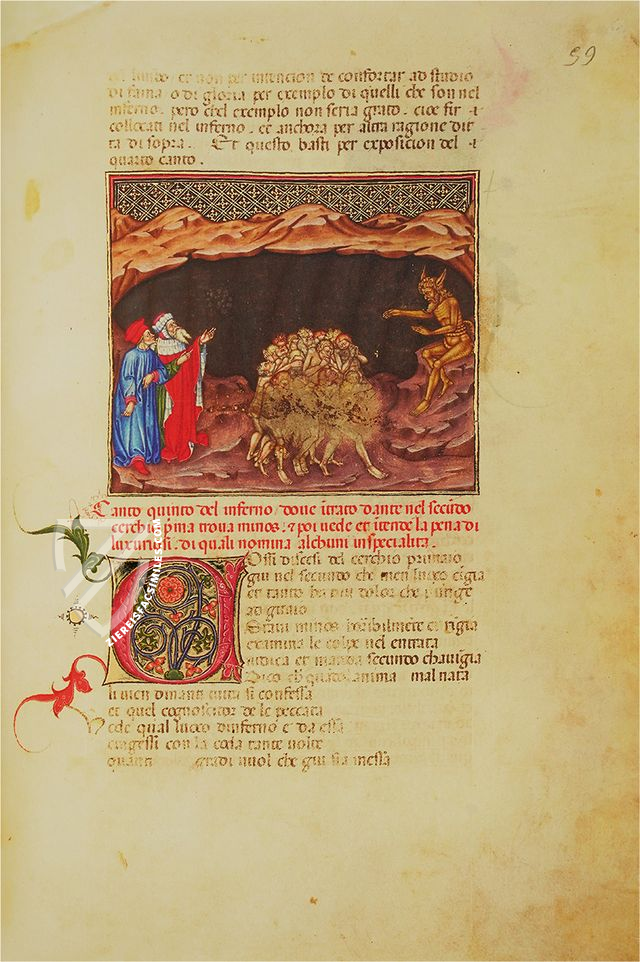
#1 Divina Commedia del Duca Filippo Maria Visconti
Language: Italian
#2 Inferno Imola
Language: Italian
(3,000€ - 7,000€)
- Treatises / Secular Books
- Apocalypses / Beatus
- Astronomy / Astrology
- Bestiaries
- Bibles / Gospels
- Chronicles / History / Law
- Geography / Maps
- Saints' Lives
- Islam / Oriental
- Judaism / Hebrew
- Single Leaf Collections
- Leonardo da Vinci
- Literature / Poetry
- Liturgical Manuscripts
- Medicine / Botany / Alchemy
- Music
- Mythology / Prophecies
- Psalters
- Other Religious Books
- Games / Hunting
- Private Devotion Books
- Other Genres
- Afghanistan
- Armenia
- Austria
- Belgium
- Belize
- Bosnia and Herzegovina
- China
- Colombia
- Costa Rica
- Croatia
- Cyprus
- Czech Republic
- Denmark
- Egypt
- El Salvador
- Ethiopia
- France
- Germany
- Greece
- Guatemala
- Honduras
- Hungary
- India
- Iran
- Iraq
- Israel
- Italy
- Japan
- Jordan
- Kazakhstan
- Kyrgyzstan
- Lebanon
- Liechtenstein
- Luxembourg
- Mexico
- Morocco
- Netherlands
- Palestine
- Panama
- Peru
- Poland
- Portugal
- Romania
- Russia
- Serbia
- Spain
- Sri Lanka
- Sweden
- Switzerland
- Syria
- Tajikistan
- Turkey
- Turkmenistan
- Ukraine
- United Kingdom
- United States
- Uzbekistan
- Vatican City
- A. Oosthoek, van Holkema & Warendorf
- Aboca Museum
- Ajuntament de Valencia
- Akademie Verlag
- Akademische Druck- u. Verlagsanstalt (ADEVA)
- Aldo Ausilio Editore - Bottega d’Erasmo
- Alecto Historical Editions
- Alkuin Verlag
- Almqvist & Wiksell
- Amilcare Pizzi
- Andreas & Andreas Verlagsbuchhandlung
- Archa 90
- Archiv Verlag
- Archivi Edizioni
- Arnold Verlag
- ARS
- Ars Magna
- ArtCodex
- AyN Ediciones
- Azimuth Editions
- Badenia Verlag
- Bärenreiter-Verlag
- Belser Verlag
- Belser Verlag / WK Wertkontor
- Benziger Verlag
- Bernardinum Wydawnictwo
- BiblioGemma
- Biblioteca Apostolica Vaticana (Vaticanstadt, Vaticanstadt)
- Bibliotheca Palatina Faksimile Verlag
- Bibliotheca Rara
- Boydell & Brewer
- Bramante Edizioni
- Bredius Genootschap
- Brepols Publishers
- British Library
- C. Weckesser
- Caixa Catalunya
- Canesi
- CAPSA, Ars Scriptoria
- Caratzas Brothers, Publishers
- Carus Verlag
- Casamassima Libri
- Centrum Cartographie Verlag GmbH
- Chavane Verlag
- Christian Brandstätter Verlag
- Circulo Cientifico
- Club Bibliófilo Versol
- Club du Livre
- CM Editores
- Collegium Graphicum
- Collezione Apocrifa Da Vinci
- Comissão Nacional para as Comemorações dos Descobrimentos Portugueses
- Coron Verlag
- Corvina
- CTHS
- D. S. Brewer
- Damon
- De Agostini/UTET
- De Nederlandsche Boekhandel
- De Schutter
- Deuschle & Stemmle
- Deutscher Verlag für Kunstwissenschaft
- DIAMM
- Droz
- E. Schreiber Graphische Kunstanstalten
- Ediciones Boreal
- Ediciones Grial
- Ediclube
- Edições Inapa
- Edilan
- Editalia
- Edition Deuschle
- Edition Georg Popp
- Edition Leipzig
- Edition Libri Illustri
- Editiones Reales Sitios S. L.
- Éditions de l'Oiseau Lyre
- Editions Medicina Rara
- Editorial Casariego
- Editorial Mintzoa
- Editrice Antenore
- Editrice Velar
- Edizioni Edison
- Egeria, S.L.
- Eikon Editores
- Electa
- Emery Walker Limited
- Enciclopèdia Catalana
- Eos-Verlag
- Ephesus Publishing
- Ernst Battenberg
- Eugrammia Press
- Extraordinary Editions
- Fackelverlag
- Facsimila Art & Edition
- Facsimile Editions Ltd.
- Facsimilia Art & Edition Ebert KG
- Faksimile Verlag
- Feuermann Verlag
- Folger Shakespeare Library
- Franco Cosimo Panini Editore
- Friedrich Wittig Verlag
- Fundación Hullera Vasco-Leonesa
- G. Braziller
- Gabriele Mazzotta Editore
- Gebr. Mann Verlag
- Gesellschaft für graphische Industrie
- Getty Research Institute
- Giovanni Domenico de Rossi
- Giunti Editore
- Graffiti
- Grafica European Center of Fine Arts
- Guido Pressler
- Guillermo Blazquez
- Gustav Kiepenheuer
- H. N. Abrams
- Harrassowitz
- Harvard University Press
- Helikon
- Hendrickson Publishers
- Henning Oppermann
- Herder Verlag
- Hes & De Graaf Publishers
- Hoepli
- Holbein-Verlag
- Houghton Library
- Hugo Schmidt Verlag
- Idion Verlag
- Il Bulino, edizioni d'arte
- ILte
- Imago
- Insel Verlag
- Insel-Verlag Anton Kippenberger
- Instituto de Estudios Altoaragoneses
- Instituto Nacional de Antropología e Historia
- Introligatornia Budnik Jerzy
- Istituto dell'Enciclopedia Italiana - Treccani
- Istituto Ellenico di Studi Bizantini e Postbizantini
- Istituto Geografico De Agostini
- Istituto Poligrafico e Zecca dello Stato
- Italarte Art Establishments
- Jan Thorbecke Verlag
- Johnson Reprint Corporation
- Josef Stocker
- Josef Stocker-Schmid
- Jugoslavija
- Karl W. Hiersemann
- Kasper Straube
- Kaydeda Ediciones
- Kindler Verlag / Coron Verlag
- Kodansha International Ltd.
- Konrad Kölbl Verlag
- Kurt Wolff Verlag
- La Liberia dello Stato
- La Linea Editrice
- La Meta Editore
- Lambert Schneider
- Landeskreditbank Baden-Württemberg
- Leo S. Olschki
- Les Incunables
- Liber Artis
- Library of Congress
- Libreria Musicale Italiana
- Lichtdruck
- Lito Immagine Editore
- Lumen Artis
- Lund Humphries
- M. Moleiro Editor
- Maison des Sciences de l'homme et de la société de Poitiers
- Manuscriptum
- Martinus Nijhoff
- Maruzen-Yushodo Co. Ltd.
- MASA
- Massada Publishers
- McGraw-Hill
- Metropolitan Museum of Art
- Militos
- Millennium Liber
- Müller & Schindler
- Nahar - Stavit
- Nahar and Steimatzky
- National Library of Wales
- Neri Pozza
- Nova Charta
- Oceanum Verlag
- Odeon
- Orbis Mediaevalis
- Orbis Pictus
- Österreichische Staatsdruckerei
- Oxford University Press
- Pageant Books
- Parzellers Buchverlag
- Patrimonio Ediciones
- Pattloch Verlag
- PIAF
- Pieper Verlag
- Plon-Nourrit et cie
- Poligrafiche Bolis
- Presses Universitaires de Strasbourg
- Prestel Verlag
- Princeton University Press
- Prisma Verlag
- Priuli & Verlucca, editori
- Pro Sport Verlag
- Propyläen Verlag
- Pytheas Books
- Quaternio Verlag Luzern
- Reales Sitios
- Recht-Verlag
- Reichert Verlag
- Reichsdruckerei
- Reprint Verlag
- Riehn & Reusch
- Roberto Vattori Editore
- Rosenkilde and Bagger
- Roxburghe Club
- Salerno Editrice
- Saltellus Press
- Sandoz
- Sarajevo Svjetlost
- Schöck ArtPrint Kft.
- Schulsinger Brothers
- Scolar Press
- Scrinium
- Scripta Maneant
- Scriptorium
- Shazar
- Siloé, arte y bibliofilia
- SISMEL - Edizioni del Galluzzo
- Sociedad Mexicana de Antropología
- Société des Bibliophiles & Iconophiles de Belgique
- Soncin Publishing
- Sorli Ediciones
- Stainer and Bell
- Studer
- Styria Verlag
- Sumptibus Pragopress
- Szegedi Tudomànyegyetem
- Taberna Libraria
- Tarshish Books
- Taschen
- Tempus Libri
- Testimonio Compañía Editorial
- Thames and Hudson
- The Clear Vue Publishing Partnership Limited
- The Facsimile Codex
- The Folio Society
- The Marquess of Normanby
- The Richard III and Yorkist History Trust
- Tip.Le.Co
- TouchArt
- TREC Publishing House
- TRI Publishing Co.
- Trident Editore
- Tuliba Collection
- Typis Regiae Officinae Polygraphicae
- Union Verlag Berlin
- Universidad de Granada
- University of California Press
- University of Chicago Press
- Urs Graf
- Vallecchi
- Van Wijnen
- VCH, Acta Humaniora
- VDI Verlag
- VEB Deutscher Verlag für Musik
- Verlag Anton Pustet / Andreas Verlag
- Verlag Bibliophile Drucke Josef Stocker
- Verlag der Münchner Drucke
- Verlag für Regionalgeschichte
- Verlag Styria
- Vicent Garcia Editores
- W. Turnowski Ltd.
- W. Turnowsky
- Waanders Printers
- Wiener Mechitharisten-Congregation (Wien, Österreich)
- Wissenschaftliche Buchgesellschaft
- Wissenschaftliche Verlagsgesellschaft
- Wydawnictwo Dolnoslaskie
- Xuntanza Editorial
- Zakład Narodowy
- Zollikofer AG

